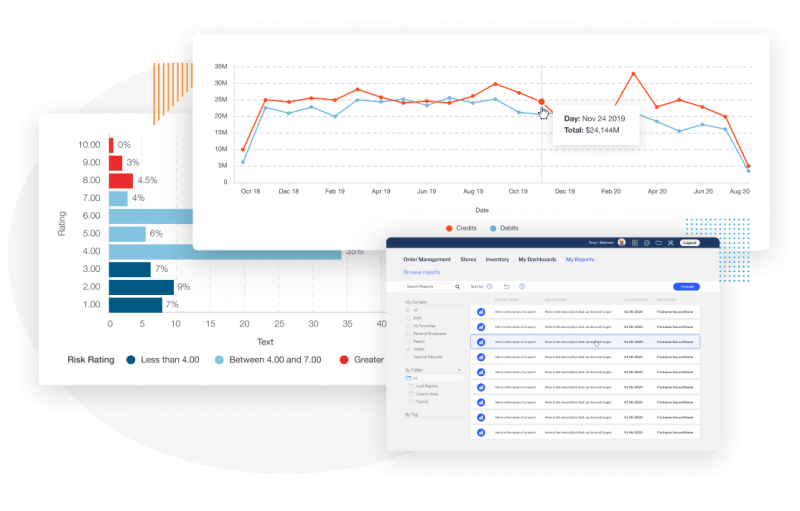Self-service Business Intelligence Software: A Game Changer For Departments – Microsoft is still “up and to the right” in Gartner’s latest Magic Quadrant for Analytics and Business Intelligence Platforms, while significant competitors have dropped out. We met with Amir Netz, the “father” of Power BI at Microsoft, to discover more about the product’s success.
The latest Gartner Magic Quadrant for analytics and business intelligence (BI) is now available, and Microsoft is included in the “Leaders” quadrant (see image above). According to Microsoft, this is the company’s 14th consecutive year as a BI leader. Despite the fact that Microsoft is in the same position as last year, its primary competitors have lost ground. Thoughtspot is located in the Visionaries quadrant. While Qlik has grown along the “full vision” axis, it has declined in the “ability to do.” Tableau, on the other hand, has recovered in both categories.
Self-service Business Intelligence Software: A Game Changer For Departments
This offers Microsoft and the Power BI juggernaut a significant advantage over the opposition. And, while I’m tempted to see Microsoft as a giant that is winning due to its growth and corporate dominance, I can tell you from personal experience that it wasn’t always that way. I’ve been involved with the Microsoft BI stack from its creation in the late 1990s, and I was a member of the company’s BI Partner Advisory Council (PAC) from around 2005 to 2011. . in SQL Server Analysis Services, his competence in the application, and the self-explanatory feature of the data that is best known for 15 years of shaking and missing.
Amazon Sagemaker for Tableau Self Service Predictive Business Insights
So, what happened? What did Microsoft do correctly? And how did it contribute to the BI platform experience? I held an hour-long talk with Amir Netz, a Microsoft Technical Fellow and the father of Power BI, to grasp Microsoft’s perspective. After Microsoft purchased the technology that would later become Analysis Services from Panorama Software, an Israeli BI business (now based in Canada), Netz joined Microsoft. I’ve known Netz to be a brilliance as a technologist, strategist, and salesperson since meeting him 15 years ago on the Microsoft BI PAC. So, despite having prepared a promotional narrative, I was pleased with what they chose.
According to Netz, the attraction and success of Power BI in its first two years was primarily due to the product’s low cost (Power BI Desktop is free, as is the entry cloud subscription), dependent on the low price. Both launched the interest and customer group by lighting the point. He also believes that going “all-in” on the cloud at a time when the majority of firms are still on-premises was a risk that paid off. This choice, as well as the persistence to produce even the most dubious collection of products, is attributed to James Phillips, Microsoft’s President of Business Applications. Phillips joined Microsoft from Couchbase, where he was the company’s creator and CEO in its early days. Although Netz did not say so, it is evident that bringing Phillips’ ideas to Microsoft made a significant difference in Power BI’s success.
Perhaps as a result of Phillips, the Power BI team embraced monthly product updates, adding new products at an unprecedented tempo. Platform updates on Microsoft’s BI PAC can only be implemented when SQL Server or Microsoft Office releases a new version, which means updates every 18 months at best. Along with the night-and-day improvements to the new flow came more exposure, with members of the Power BI team, including developers and program managers, participating heavily with the community via blogs and social media, as well as videos that he accompanies. The drug’s monthly production.
Power BI benefited greatly from the quantity of community participation. Although many people believe that Microsoft can simply push new goods because of its massive market, the truth is that new products at Microsoft face an uphill battle, with little opposition from the first and other small enterprises. To accommodate their rapid distribution, Microsoft’s field vendors have been focusing on selling fixed, high-ticket products and services such as Office, SQL Server, and now Azure. Field marketing, on the other hand, has had very little time to promote new products and value propositions. Moreover, unlike high-income companies that outsource their sales efforts, Microsoft’s sales personnel do not have this option.
Bi Pro Power
A low price and a vast area, however, will only get you so far. So, what happened in order to keep growing? According to Netz, the built-in BI automation environment for each user and department in Microsoft frequently leads to enterprise-wide extension later on. As a result, the product must evolve to meet the needs of the business. Microsoft was ready and poised to test the market at this moment due to its heritage Analysis Services (and the fact that Power BI and Analysis Services shared engine technology). Power BI evolved from a solution that compensated for Microsoft’s existing BI limitations to a platform that provided business purpose and power.
This collaboration was established with the release of Power BI Premium. Its relatively expensive cost of entry, starting at roughly $5,000 per organization/month (compared to $10 per user/month for Power BI Professional), made large firms’ economics more acceptable. Above all, the enterprise push implies that any professional who has worked on the Microsoft enterprise BI stack can join the Power BI ecosystem and community. This was a classic success story: the specialists discovered new products and were able to increase their potential in the cloud, and Microsoft expanded tremendously in the BI industry.
Power BI’s interoperability with other Microsoft platforms was another distinguishing feature. This includes Excel; Azure Synapse Analytics, the company’s data warehouse and analytics platform; Azure Machine Learning; Azure Purview, Microsoft’s small directory and management platform that was recently made public; and, most importantly, Microsoft Teams, especially in the age of Pandemic.
The purpose of the Teams connection, according to Netz, is to make essential data like chats and calendars available with a single click, as well as to enable casual examination of “want to know more?” occurrences. According to Netz, this cultural shift has already begun at Microsoft, with data accounting for 50% of the material within Microsoft’s leadership.
Business Intelligence in the Modern Era
This has been a pretty long essay, and there wasn’t enough space to cover every facet of the narrative, but I’ll end by mentioning that, as well as Power BI has done, it confronts certain problems. For example, the lack of a Power BI Desktop client for Mac denies Microsoft access to a significant set of new data scientists, developers, analysts, and business users who are almost entirely focused on Windows. Tableau was once only available for Windows. This was handled by providing a fully functional online interface as well as a native Mac client. As a result, it has been the default choice for the aforementioned Mac categories.
Tableau’s acquisition by Salesforce, which also recently bought Slack,Business Intelligence means that the Power BI-Teams interface may face stiff competition. Another issue, as Gartner noted in its analysis, is that Power BI has a natural association with the Azure cloud, which creates a barrier to adoption by a multi-brand gung-ho team. Tableau and independents such as Qlik, Sisense, and ThoughtSpot do not have this issue. And even Google Cloud’s Looker, which is little recognized because it was acquired by Google.
So, yeah, Power BI is ahead of the curve and doing well. However,Business Intelligence it must keep an eye on the future since the world of business intelligence will become more competitive, driven, and intelligent for clients, mega-vendors, and public cloud providers. The Power BI suite is Microsoft’s advantage in all of this.
This, and I make an effort to avoid “old Microsoft”-style arrogance. Perhaps most critically,Business Intelligence the organization has maintained high quality throughout the product’s lifespan. To put it another way, the group is content. The ultimate result is something enjoyable to use, something that impresses friends and customers. It appears to be beneficial to analyst firms as well.
Definition, Types, and Importance of Research And Development (r&d)
Related Developers benefit from a boosted Dev Box.Business Intelligence Build 2023 by Microsoft All of Microsoft Build 2023’s major announcements regarding Bing Chat and AI Microsoft has introduced ChatGPT with Bing’s AI-powered search. There are numerous business intelligence (BI) tools available, ranging from technical to non-technical ones. Powerful platforms for lightweight and easy-to-use dashboard builders.Business Intelligence Choosing the proper one is dependent on where your organization is now, where you want it to go, who requires data access, your technological stack, and so on.
Choosing the best business intelligence solution is a time-consuming and difficult process that necessitates buy-in from stakeholders. However, the first step is to discover
Emotional intelligence self awareness, what is self service business intelligence, Business Intelligence software for fire departments, self management emotional intelligence, emotional intelligence self test, self-service business intelligence, self service business intelligence platforms,Business Intelligence software for police departments, self intelligence, Business Intelligence software for business intelligence, emotional intelligence self assessment



